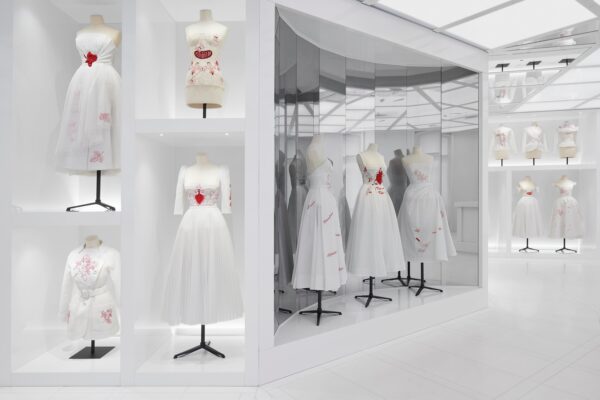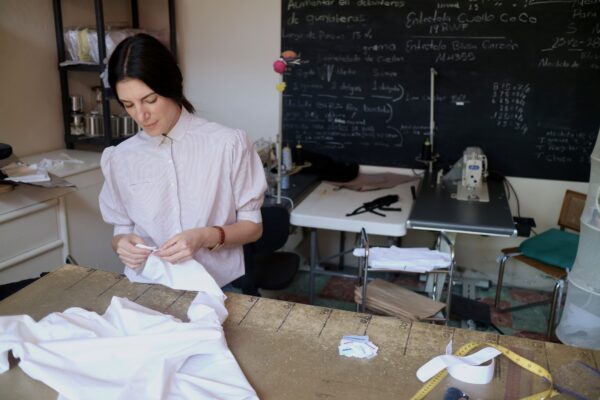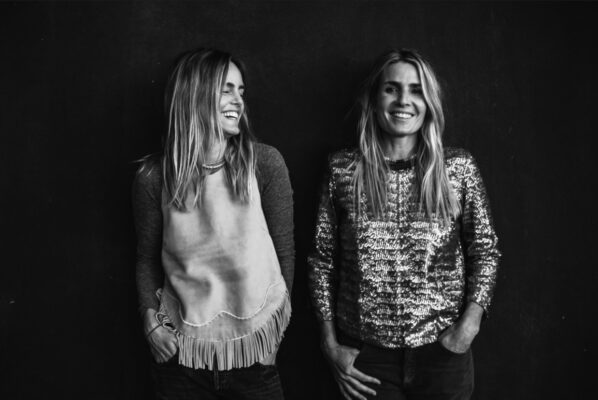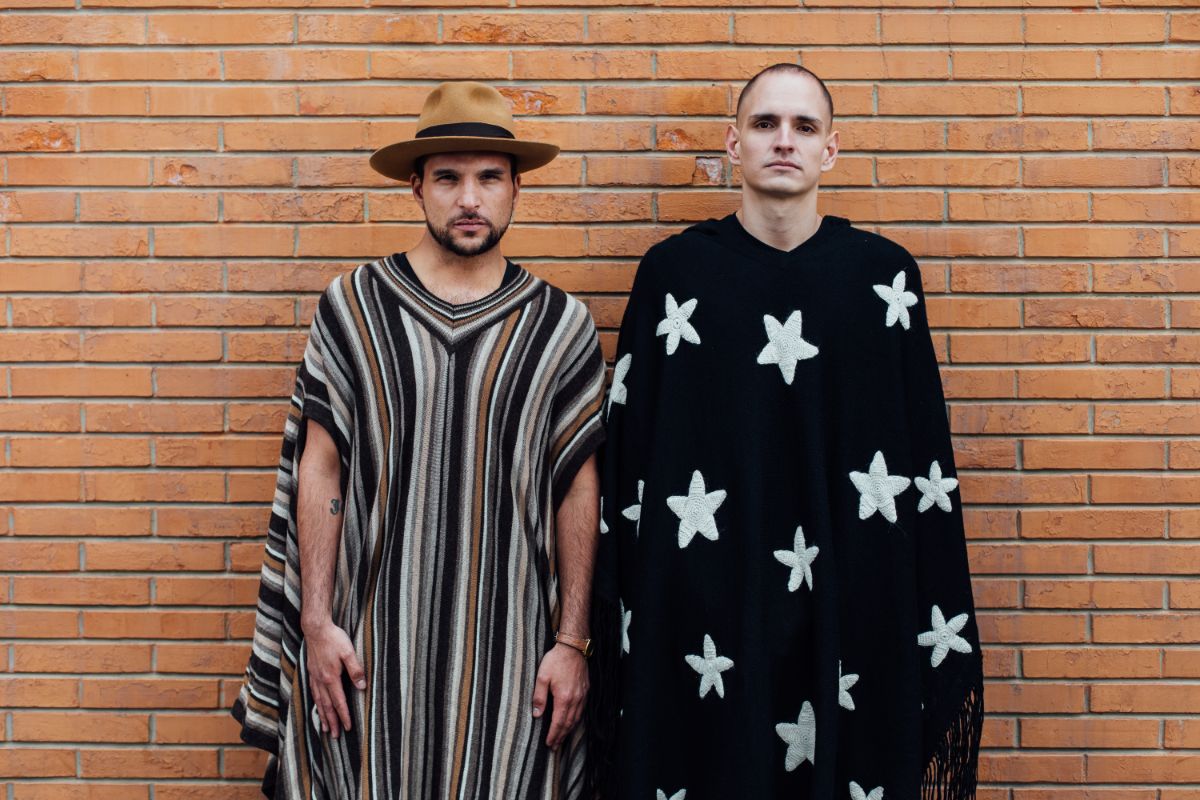
COFFEE WITH
JUAN CARLOS PEREIRA AND ANDRES JORDAN: “OUR PURPOSE HAS ALWAYS BEEN TO SHOW OUR CULTURE TO THE WORLD THROUGH FASHION, ART AND GASTRONOMY”
Names: Juan Carlos Pereira and Andres Jordan
Profession: Founders, Diseño y Autores Bolivianos; Creative Directors, Juan de la Paz
Nationality: Bolivian
Zodiac Sign: Virgo/Leo
Instagram: @dabbolivia @juandelapazofficial
LATINNESS: When and how did Diseño y Autores Bolivianos (DAB) emerge?
DAB: DAB emerged in 2013 with the first exhibition of ready to wear by Bolivian designers. Juan Carlos Pereira was its creator, and this exhibition is the origin of everything.
LATINNESS: What was fashion like in Bolivia before this?
DAB: Before, as in many of our countries, fashion was approached from the show or entertainment aspect. In Bolivia there were fashion shows and runways, but they had that connotation. Because of this context, for us, it was important to first validate fashion based on culture. This is why we wanted a cultural center to welcome us, thus changing the logic of the fashion show to that of a museum exhibition. This was the first edition; now we are on the sixth. In the second, the runway appeared and we expanded to other types of exhibitions. Little by little, it’s been taking on an identity.
LATINNESS: Have you noted a tangible before and after in the country’s fashion industry?
DAB: I think so, definitely!
LATINNESS: Don’t be modest…
DAB: Looking back, we managed to connect with a new generation of photographers and artists. We introduced the DAB Awards in 2019, which has served as a platform for all these new talents. If we take into account the fact that Bolivia doesn’t have a Ministry of Culture and the confinement, we’ll admit that we’ve executed very efficient actions.
It was another world before, but we generated an impact not only in Bolivia, but also in Latin America. The curatorship has that character. We now work with designers like Annaiss Yucra from Peru, or Chain Sustainable from Argentina. We present ourselves as a different option in Latin America, emphasizing the similar values we share and that allow us to rise together.


Photos by Gentileza La Paz Culturas.
LATINNESS: With DAB you’ve managed to promote Bolivian and Andean culture on an international level with all the guests you’ve invited to the country and the Vogue cover on which you collaborated. What has the local reaction been like?
DAB: Very positive. Truthfully it has helped us, especially since our purpose has always been to show our culture to the world through fashion, art and gastronomy. So it’s really a challenge accomplished, right? In other words, it’s like a dream made reality, because it’s helped us amplify our message.
Several Bolivians who live in London or elsewhere saw that cover and wrote to us saying they felt nostalgic… that fills your soul. When a Bolivian is seen abroad on the cover of such a well-known magazine, it’s very gratifying. It’s really what we’ve always wanted to accomplish.
LATINNESS: Tell us more about this cover and its impact…
DAB: As you know, this career is built on milestones that empower our people, and the topic of cholitas is very important. Having worked on the theme in 2019, and then closed with a cover of the climbing cholitas was something magical. Today, we have a lot of super confident designers, artisans and cholitas, with whom we also work and do consultancies for. They now see that it’s possible and that this space for women is transcendental. To show them as 360 degree women, contemporary and in different contexts… that is history and living culture.
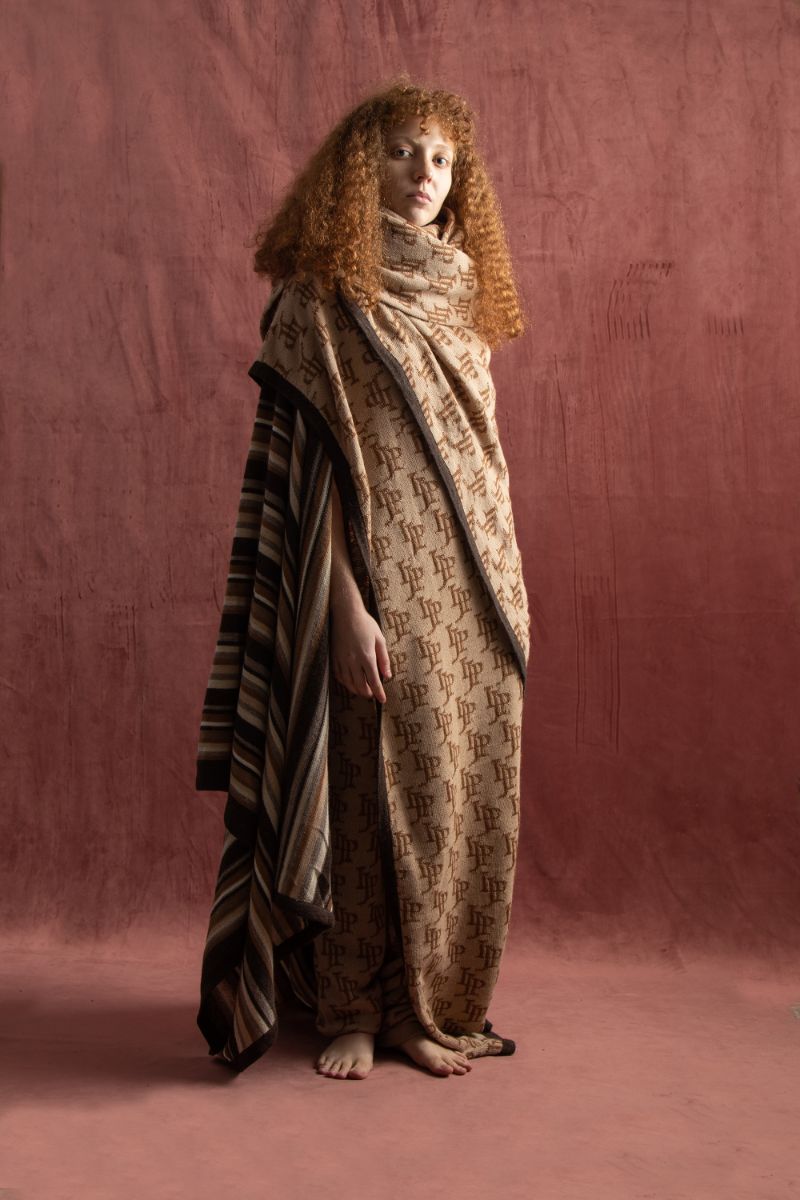
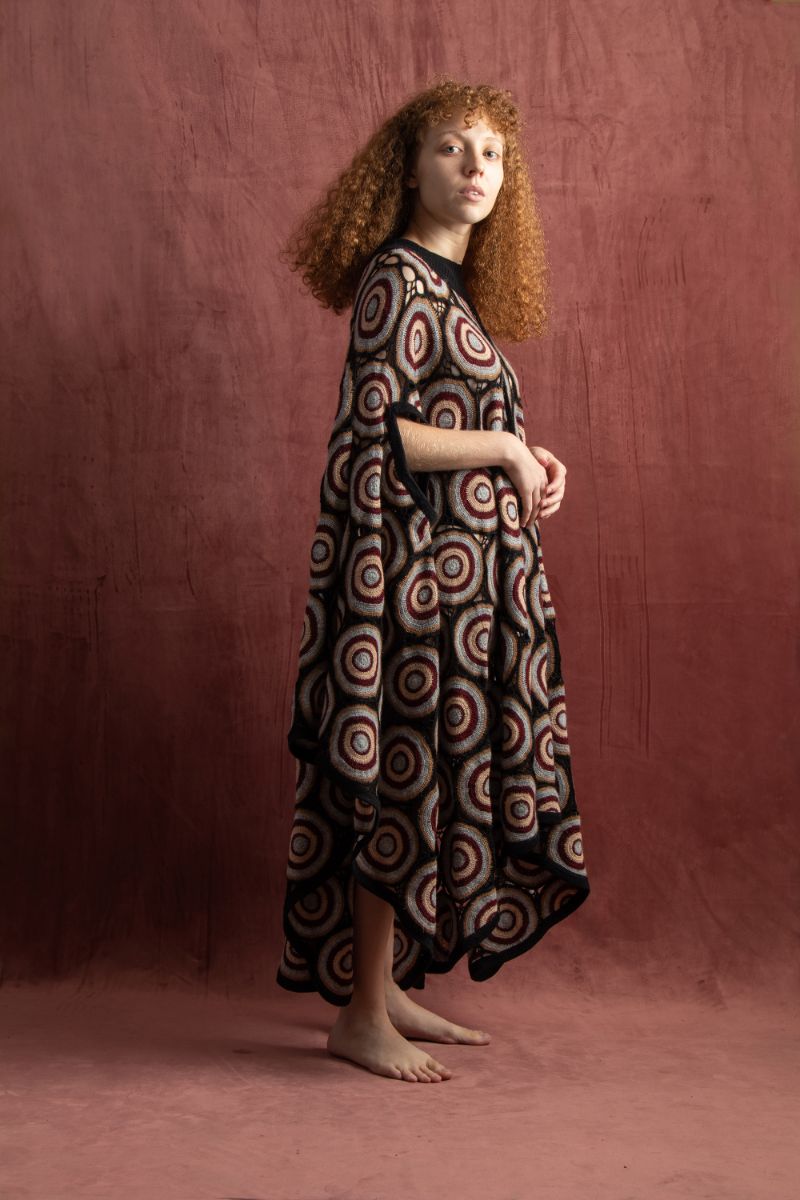
Photos by Alan Stroebel.
LATINNESS: Before DAB, came the Juan de la Paz brand. Can you talk to us about this project?
DAB (JUAN CARLOS): Juan de la Paz was born in 2000, and first, it was a jewelry business. I’m also a goldsmith, and eventually I worked with communities. Thanks to the closeness I had with some NGOs, I discovered great potential in knitted textiles and the whole narrative of revaluing both the technique and the women behind it.
Andres eventually joined, and with him, we discovered a broader intention: to transcend the Andean beyond the Bolivian. We went to Arequipa, Peru, which is the capital of alpaca, and we connected with all these fabrics. This is how we began to design knitted collections with a certain philosophy, with certain values, especially ethics, sustainability and responsibility, and zero waste. Without wasting anything.
Now we are also working with eastern communities from Bolivia, from the lowlands, from Santa Cruz, and specifically, from everything that is La Chiquitanía and Chiquito. These are areas where women make cotton yarns with flowers and bark dyes in an incredible way.
We continue with our commitment, especially after the fires that swept across the continent in 2019, which were very severe. Those communities were affected, but managed to escape the fires. They have beautiful stories within that tragedy, because they found new colors to dye; in fact, they started doing it with ash. Also, new forms of silks and fabrics. Beautiful stories to tell.


Photos by Alan Stroebel.
LATINNESS: Is your idea to continue looking for new communities with which to collaborate?
DAB: Exactly. This is the business model for the social project behind it. Our mission revolves around empowering the ancestral knowledge of the region, and, obviously, textile practices. So, we always have a collection or capsule or a link with a community or its “sister” community, which helps us develop a beautiful product and story behind it.
LATINNESS: In your opinion, what role does design have in a country’s collective memory?
DAB: It depends on the country and the historical moment, but I think it revolves around managing certain typologies, design elements, and, above all, finding an ethos that is very strong and powerful. I associateColombia with the ethos of celebration, of that celebration for life, the Caribbean aesthetics and the psychology it carries with it, the performance of the boleros and beautiful gold jewels. To revalue all that culture around the festival.
From the Argentine point of view, I think, for example, of Patagonia, La Pampa, the typology of the gaucho and the textile heritage of the merino.
With Juan de la Paz, we approach it as Bolivians, based on the ethnographic research we take on. There’s an exception: there are two garments that come from the Incas, which are the uncus and the ponchos. So, in our typological line of design, based on the responsibility I was talking about, a matrix emerges whose axis is a timeless Andean aesthetic.
These are issues that are being considered not only by our brand, but also when you look at other creative projects, such as Gustu, the restaurant, or Freddy Mamani’s architecture. This becomes baggage and, as you say, it already has that package of what you can communicate, of what aesthetic is, right? We are in construction and constantly searching for that.
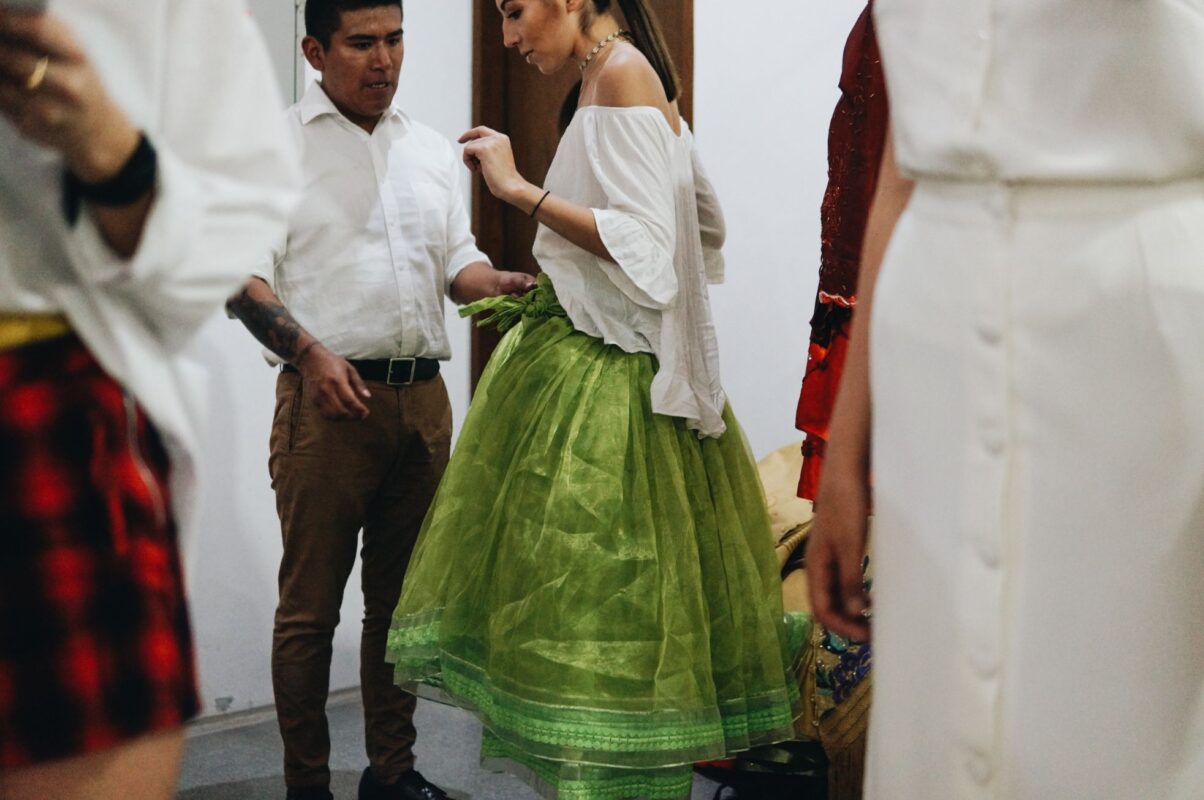
Cholita fashion from La Paz at the DAB Awards, 2019. Photo by Gentileza La Paz Culturas.
LATINNESS: Juan Carlos, you once told me that when you presented your collection to a buyer from Paris, she recommended removing “Made in Bolivia” from your label.
DAB: Yes, at one of these alpaca fairs where buyers from all over the world attend, we showed our look book to one, and the buyer told us something like: “The product is beautiful and the photos are beautiful. Everything is incredible! But on a commercial level, ‘Made in Bolivia’, no. We don’t know anything about it”. And of course, there’s Peru, which is a more recognized and specialized country in the industry, when compared to Bolivia, which does not have such a strong commercial image. This was made clear to us by this encounter because she told us that “Made in Bolivia” did not speak to her the same way “Made in Peru” does, as it is recognized for its yarn and its pima cotton, and people look for it exclusively.
LATINNESS: So, it’s been a challenge …
DAB: Sure. In Bolivia we don’t have a country brand. The projects created haven’t even lasted a year. We felt it was our responsibility to create this value for products, gastronomy or experiences “Made in Bolivia”. To ensure it’s understood that there is global and universal quality behind these, and that we could curate and present it.
This came from there, from what I told you before, from that feedback. When an international buyer thinks of South America, they think of very precise topics, such as the aesthetics of celebration.
These types of issues have been worked on for years and are a result of government strategies, since they have a lot to do with politics, responsibility and continuity. Which is why, with six editions of DAB, there are several things we can show the world with great quality and say: “this can be in your store”, “Gustu can feed the pope”, and “yes, you can share Bolivian products with the prince and princess of Japan ”. In other words, let’s break those stereotypes too.
LATINNESS: Today, with all this in mind, would you still apply “Made in Bolivia” to your label? Would you say it’s commercial now?
DAB: Yes, we have years of learning. These actions give Bolivia a commercial value. We are experiencing it in the front line because buyers and concept stores are looking for us and want products from Bolivia. Buyers and designers often converge on the platform, so there is already a before and after there.
LATINNESS: You are designers, photographers, entrepreneurs and cultural managers. How do you balance everything? Is there a role that motivates you most?
DAB: Well, we actually love doing this. We’re very observant and always love seeing new things, visual experiences. When you really enjoy it, you don’t see it as a job, but as a hobby.
Now we are thinking about telling stories through a more documentary angle. We just connected with the history of the origin of transvestism in Bolivia, which dates back to the late sixties, before the dictatorships. In all this process, there is an emblematic figure called the brunette china, which is from Bolivian folklore. It was personalized by men who dressed as women. They’ve been really kind. We’re very excited.
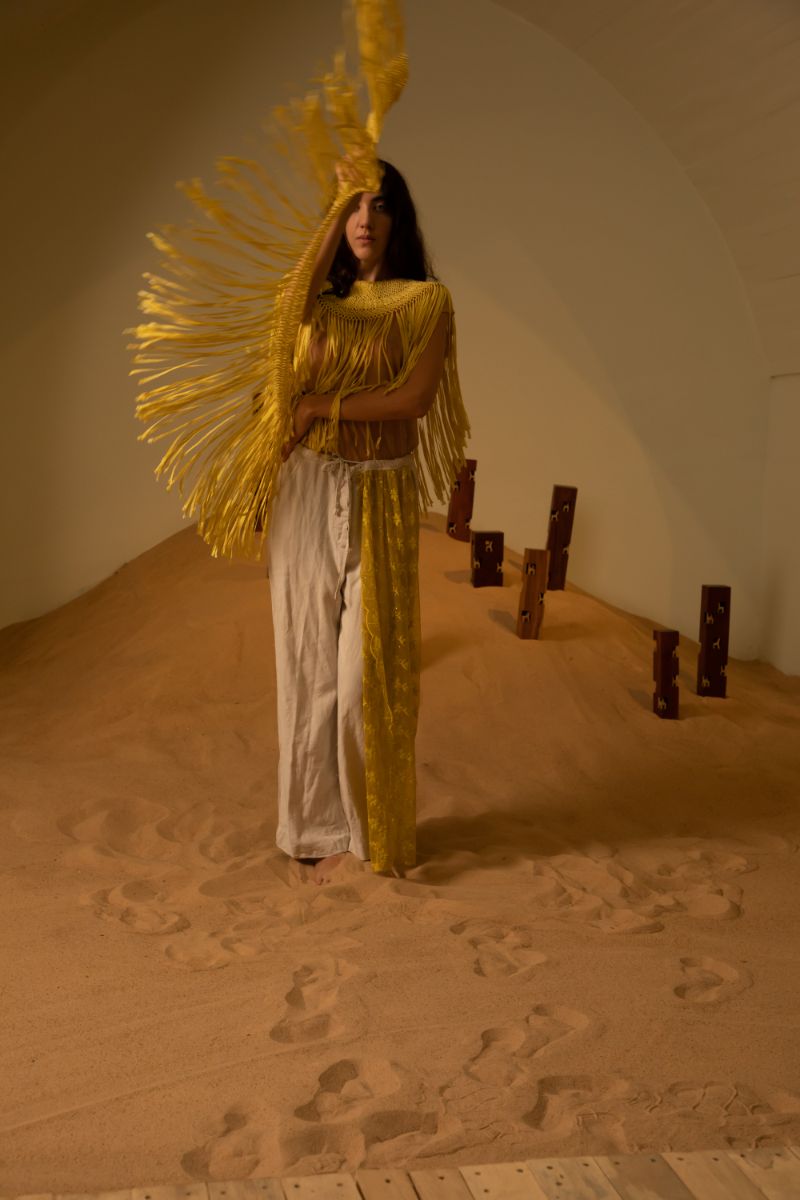
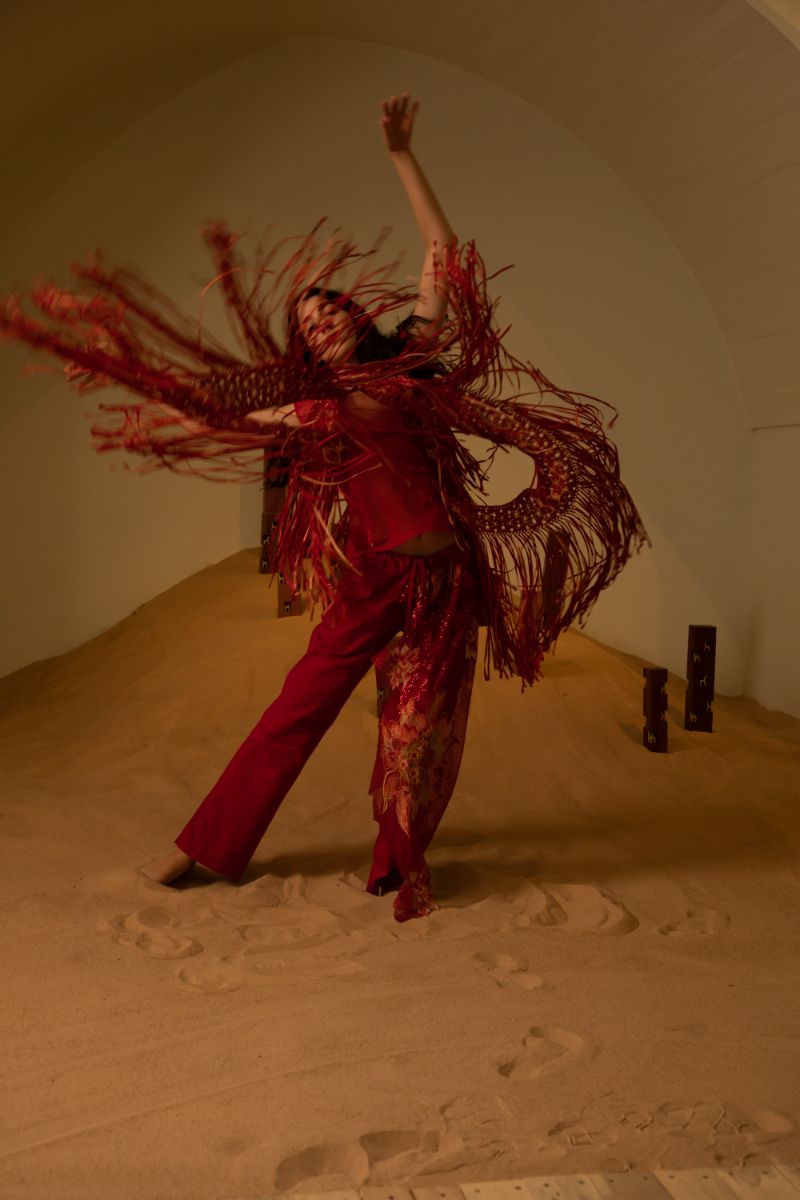
Photos by Alan Stroebel.
LATINNESS: And how did the opportunity with fashion week in Russia come about?
DAB: One of the curators wrote us saying she really liked the brand and they wanted to have us. We loved the idea and said: Sure! Everything is in Russian, there are these like lost in translation moments, and they are super specific.
The thing is, things were much bigger than we imagined. It was a kind of streaming, simultaneously and with a thousand built-in media. We connected with an Avatar model who is in France to digitize the collection, and did it with tourist places in Bolivia. We love doing it, soon we’ll show you some novelties.
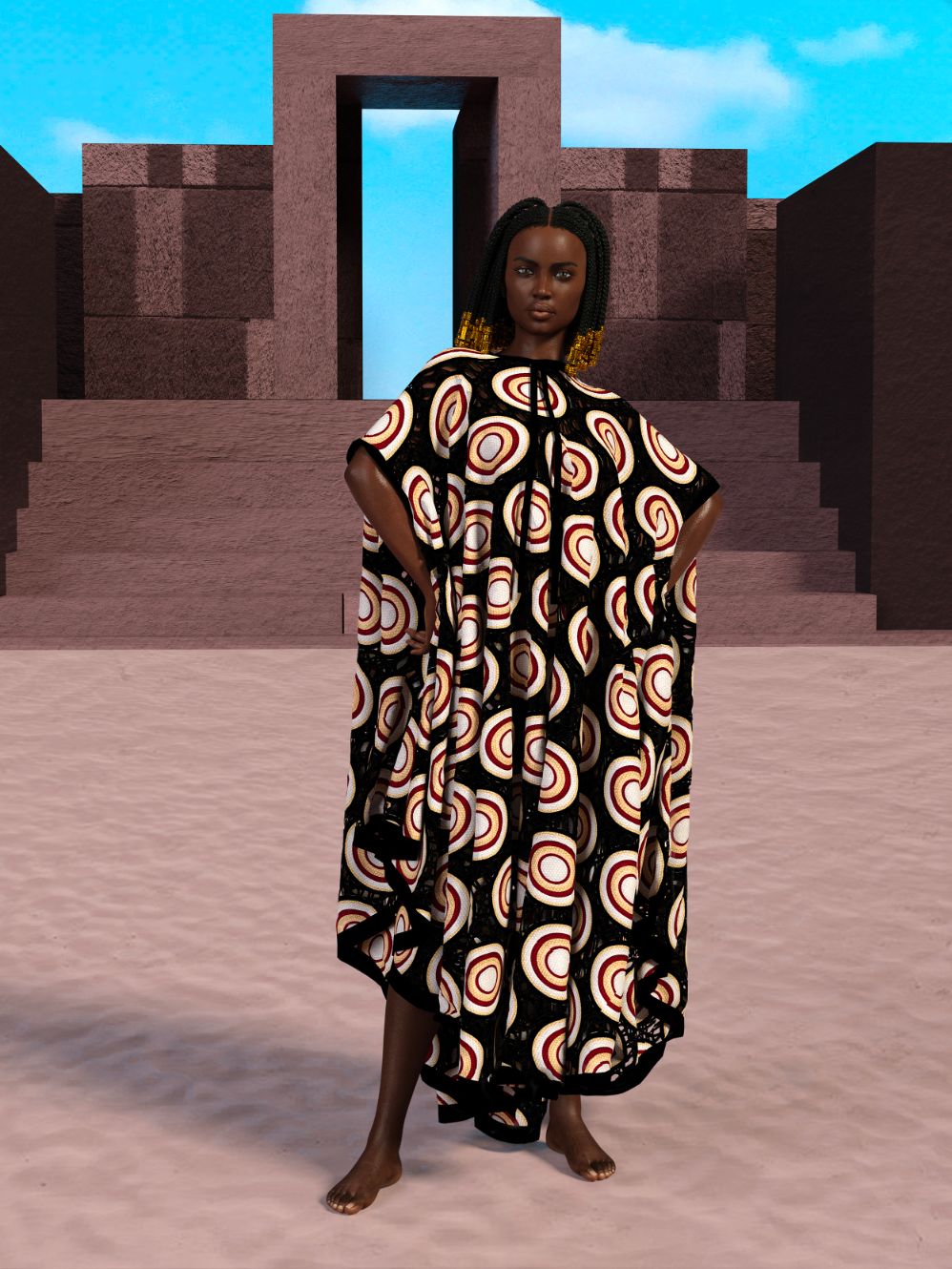
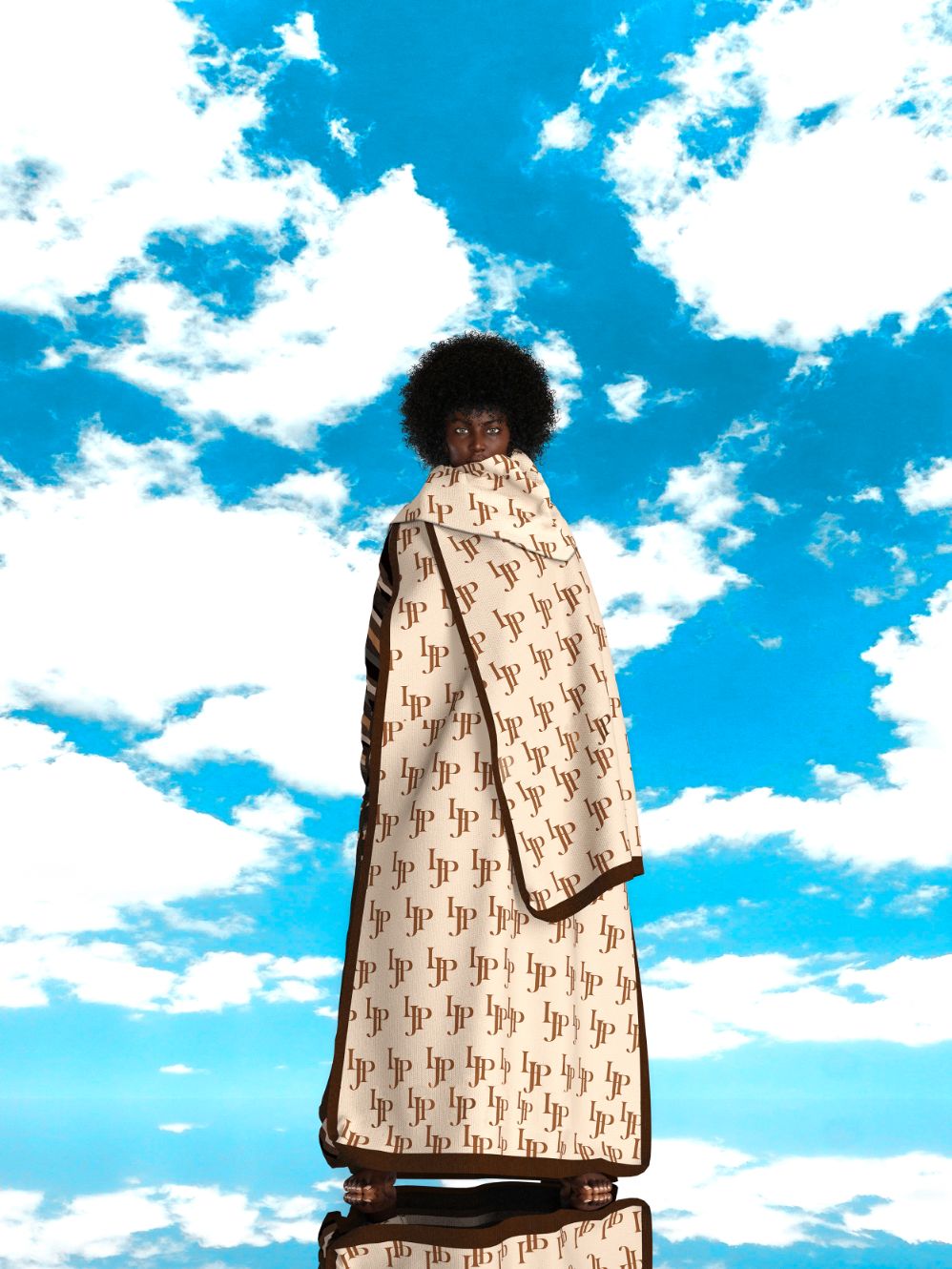
Supermodel avatar Ivaany in Tiahuanaco and Salar de Uyuni, Bolivia wearing looks by Juan de la Paz.
LATINNESS: Why is it important for you to work with artisans and enhance the craftsmanship?
DAB: Because we feel that we analyze and investigate, and because it’s a new contribution to luxury. We are used to French savoir faire, which we know very well. However, we identify certain issues that also validate our craftsmanship, our know-how and our preservation of origin.
The handmade has a value here, in France and everywhere. Unfortunately, our historical processes haven’t helped much of what is “handmade” in our regions to have the commercial impact or value that it should be given, which is why the key is to revalue because it’s always had value.
Sometimes, literally, we see peasant ladies, sisters, on the street selling basketry, usually because of the migration through which the communities pass. We post them on our networks, because people should know that these techniques are preserved. There are a lot of things that have been lost, right? So, the vehicle is communication and design, to be able to put them on other playing fields.
LATINNESS: You mentioned that Bolivia does not have a country brand, unlike Peru, which is a leader in this. What you guys have achieved independently through DAB is quite admirable. What advice would you give to creators from other countries in similar positions?
DAB: With the confinement and the pandemic, and due to the historical moment in our countries, there is political instability in the institutions. However, you are not usually alone when you have these types of ambitions. There are likely other entrepreneurs in sectors, such as gastronomy or tourism, thinking about the same thing.
Of course, it’s not something that happens overnight. We are just now seeing the results of what has happened with DAB, and we’ve been in this for about seven years. Everything is built and it’s difficult, but not impossible.
My advice would be to get together, to join forces with people who also want the same thing.
It often happens that you have personal goals or individual goals, and the ego always gets in the way. But when you seek broader horizons, such as the human and cultural economic development of our community or society, even the country, you leave all those things behind. You’re not only thinking about your brand, but also about the workshop that supplies you. These are stronger, longer-term commitments. Our advice is: don’t give up. Perseverance is the key to success.
We could have done nothing in lockdown, but we didn’t want to stand still. We had designers, artists, photographers, people with their hot or medium-hot history or a commitment that had been brewing before. We couldn’t leave them hanging, and we had to get something out. Trade obligations with strategic allies persisted.
We agreed to do with what we had. Use tools we had at hand. We have very good friends; there are you and José (Forteza) and many others that we’ve met along the way who help us, and it all adds up. Also, the artists were ready. We hadn’t thought about having an impact, but we reached many more people than ever in our physical events. This edition had the most diffusion and we achieved organic growth on the platform, on social networks and at the dissemination level, which are our indicators of success.
And it’s not over. People still want to know what happens to Bolivia. That is our responsibility.
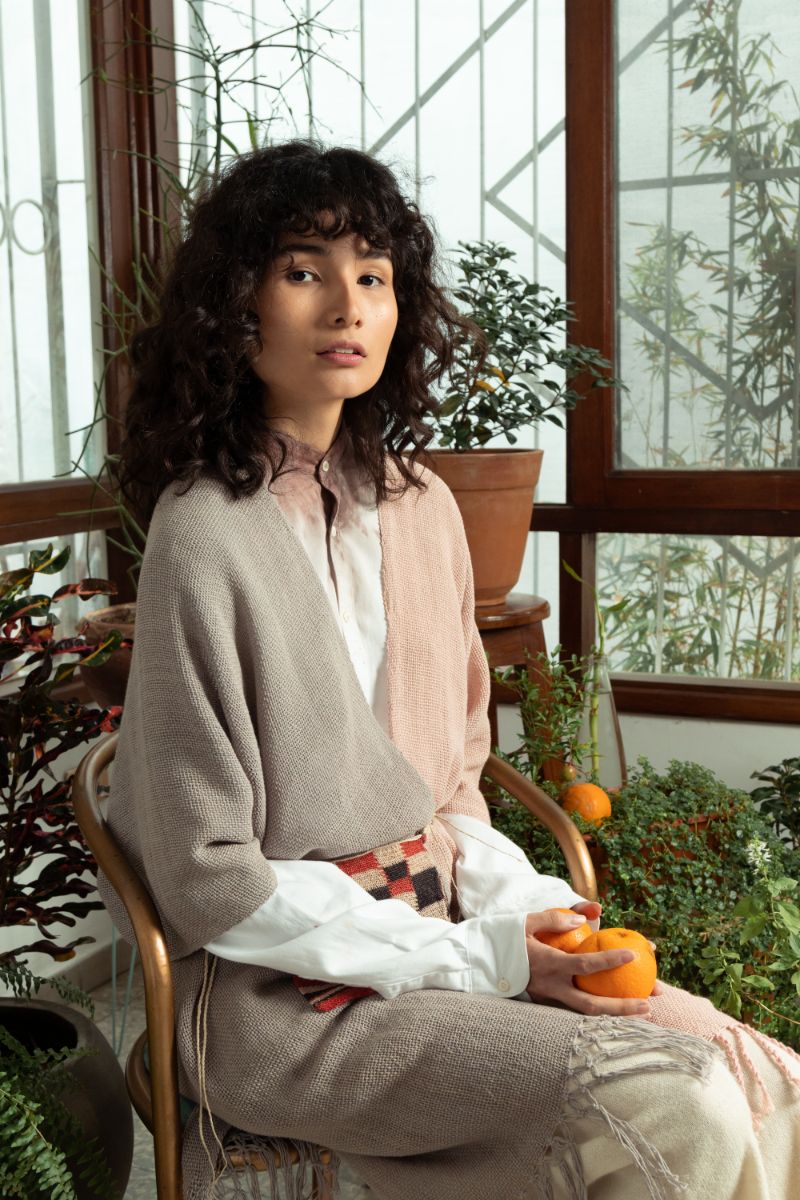
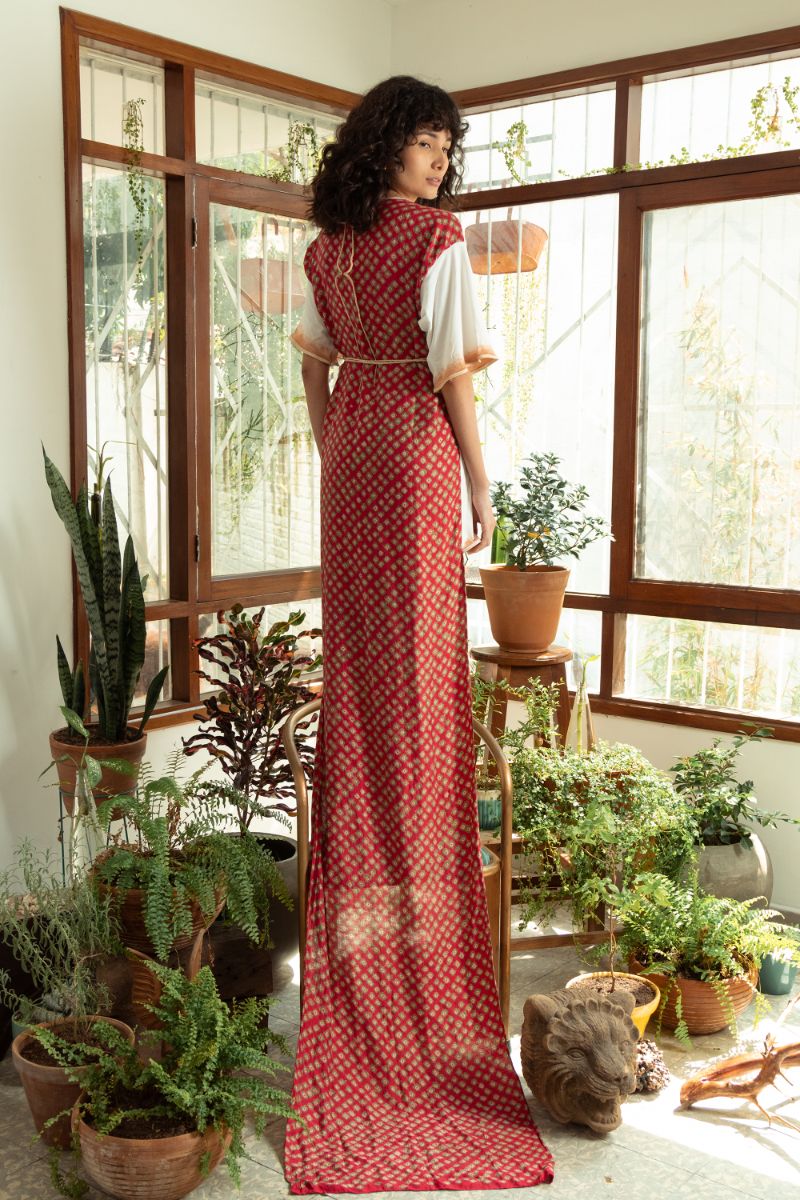
Photos by Alan Stroebel.
LATINNESS: What plans do you have for Juan de la Paz and DAB?
DAB: For Juan de la Paz, we have a new capsule collection that we are going to make with artisans from Santa Cruz. And for DAB there’s also news. We’re exploring and developing the topic of brunette china and the origin of transvestism, and expanding on that content. In addition to this, we offer consultancies and advice for designers and artisans. So the conversation continues.
There is still much to do and discover. At DAB we’ve specialized in finding new talents and giving them a channel so that they can be and have the tools that allow them to meet people. Before this, the standards were very local.
LATINNESS: What do you love the most about Latin culture?
DAB (ANDRES): I like that Latin people are very charismatic and passionate. If they like you, they really like you, and if they don’t, they’re going to let you know.
DAB (JUAN CARLOS): One of the biggest things is the language. It’s something that unites us. It connects a huge geography. It’s a very vast extension of territory that speaks the same language. Also, the idea of the mother, which is just as intense to me; it’s like the axis of society and, therefore, of the home, because Latin America is quite matriarchal. The woman is the one who takes care of her home, which is what you see with the artisans. They do this because they are still with their children, right? And these are forms of economic sustenance and of breaking structural systems. But women are all of this. My grandmother taught me to knit. My nanny Julia gave me the continuation. At school, the Jesuit priests trained us in embroidery, weaving and cooking. This maternal question is very present in all of us.

